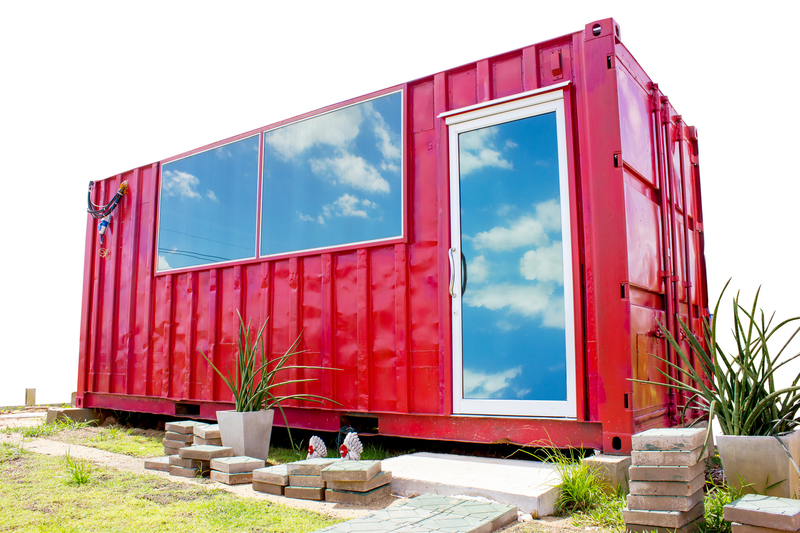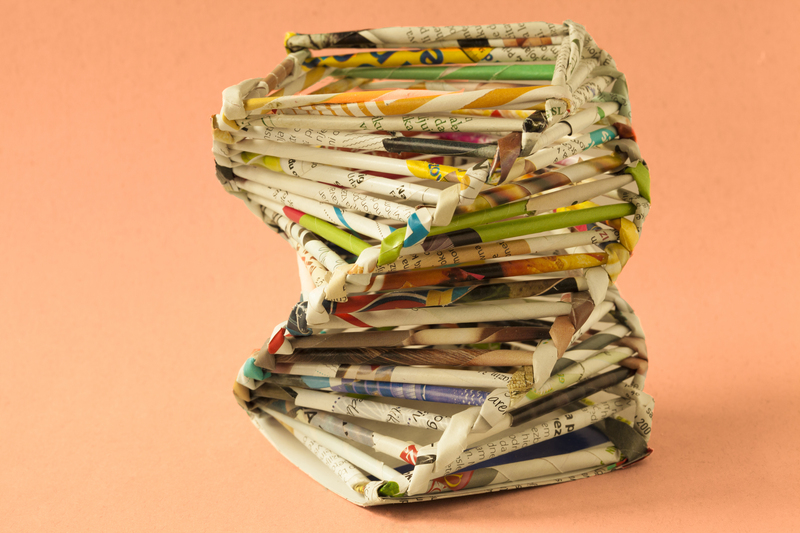Redefine Waste With Artistic Upcycling Transformations
In an era where environmental consciousness and creative thinking are valued more than ever, the concept of upcycling has emerged as a powerful way to give new life to discarded materials. When you redefine waste with artistic upcycling transformations, you shift your perspective from seeing rubbish to recognizing limitless possibilities. Let us explore how artists, innovators, and everyday people are turning trash into treasure, blending sustainability with imagination, and making a significant statement about our relationship with waste.
Understanding Upcycling: Turning Trash Into Treasure
Upcycling is the process of creatively reusing and transforming waste materials, unwanted products, or by-products into new, higher-quality items or pieces of art. Unlike recycling, which often involves breaking down materials to a base form, upcycling maintains and even elevates the character of the original objects. This process not only reduces the amount of waste sent to landfills, but it also fuels artistic upcycling transformations that can inspire communities and change mindsets.
Key Differences Between Upcycling and Recycling
- Recycling breaks items down to their raw materials, often consuming energy and resources in the process.
- Upcycling uses existing materials as is, with minimal processing, often resulting in more unique and valuable creations.
- Artistic upcycling emphasizes creative reuse, transforming waste into works of art or functional objects with distinct aesthetic appeal.

The Art of Transforming Waste: Inspiring Examples
Around the world, visionary artists are redefining waste through upcycled art, challenging preconceptions about what is considered garbage. From grand installations made from bottle caps to chic furniture crafted from pallet wood, the possibilities are endless.
Famous Artistic Upcycling Projects
- Sharon Rowe's Reusable Bags: Rowe transformed discarded fabric into durable, attractive reusable shopping bags long before sustainability was mainstream.
- Vik Muniz's Landfill Art: Known for his monumental project in Rio de Janeiro, Muniz collaborated with garbage pickers to create large-scale portraits from waste, bringing attention to recycling workers and the value found in refuse.
- Sayaka Ganz's Animal Sculptures: Ganz uses discarded plastic items, such as utensils and containers, assembling them into dynamic animal sculptures that celebrate movement and beauty in reused materials.
- Repurposed Shipping Containers: Across urban landscapes, abandoned shipping containers are being upcycled into homes, offices, and public installations, proving the value of re-imagining industrial waste.
From Junk To Genius: Everyday Artistic Upcycling Transformations
Creativity isn't limited to the professionals. In fact, the practice to redefine waste with artistic upcycling transformations is accessible to anyone. Here are a few inspiring and practical ideas embraced by upcycling enthusiasts worldwide:
- Pallet Furniture: Old shipping pallets can be upcycled into sturdy coffee tables, garden benches, or vertical planters with just a bit of sanding and imagination.
- Bottle Cap Mosaics: Artists and DIYers collect colorful bottle caps to design vibrant mosaics for wall art and garden paths.
- Wine Bottle Chandeliers: Empty glass bottles can be cleaned, decorated, and assembled into stunning, one-of-a-kind lighting features.
- Tin Can Planters: Instead of tossing cans, transform them into decorative planters for herbs and succulents with some paint and creativity.
- Old Clothing Into Quilts: Worn-out clothes can be cut and sewn into patchwork quilts, preserving memories and fabrics while reducing textile waste.
The Environmental Impact: Why Artistic Upcycling Matters
The statistics on global waste are staggering. Landfills are overflowing, oceans are choked with plastic, and the environmental cost of traditional waste disposal grows each year. Artistic upcycling transformations actively combat these trends by:
- Reducing landfill waste: Every upcycled item is one less object clogging up waste management systems.
- Lowering demand for raw resources: By reusing materials, upcycling cuts down on the energy and environmental damage caused by sourcing new resources.
- Decreasing pollution: Upcycling avoids the harsh chemical processes involved in breaking down materials during recycling.
- Promoting eco-consciousness: Artistic upcycling sparks conversations about sustainability and encourages mindful consumption.
A study by the U.S. Environmental Protection Agency found that upcycling just 10% of American household waste could prevent millions of tons of trash from entering landfills each year. This impressive statistic demonstrates the significance of upcycling as a tool for environmental transformation and public education.
How Upcycling Art Redefines Aesthetics and Value
When you redefine waste with artistic upcycling transformations, you don't just save the planet -- you change the way society views value and beauty. Upcycled art challenges the notion that new equals valuable, proving that history, texture, and creative effort can be just as precious as pristine materials.
The Beauty of Imperfection
Much of the appeal in upcycled creations lies in their uniqueness. Scratched surfaces, mismatched materials, and visible joins become elements of charm rather than flaws. Wabi-sabi, the Japanese aesthetic based on imperfection, has much in common with upcycled design, reminding us to celebrate the authentic and the handmade.
Storytelling Through Artisanal Upcycling
Every upcycled object has a story -- where it came from, who used it, and how it has been given a second life. Many artists use accompanying labels or installations to share these stories, connecting the viewer with the former life of the object and making the statement that our waste is not the end, but the beginning of something beautiful.
How to Start Your Own Artistic Upcycling Transformation
Curious about how you can redefine waste with artistic upcycling transformations at home or in your art practice? Starting is easier than you think, and the rewards go beyond environmental impact. Here are some steps to help you begin your creative journey:
Step 1: Identify Materials
- Look through what you would normally throw away: jars, cans, fabric scraps, broken furniture, plastic packaging, and more.
- Pay attention to neighborhood bulk pick-ups, thrift stores, and even online platforms where unwanted items are given away for free.
Step 2: Get Inspired
- Browse websites like Pinterest, Instagram, and Etsy for artistic upcycling transformation ideas.
- Follow upcycling artists and collect images of styles and items that speak to you.
Step 3: Gather Your Tools
- Essential tools may include glue, paint, sandpaper, scissors, nails, hammer, sewing needle, and thread.
- Don't forget safety equipment, especially when working with glass, metal, or wood.
Step 4: Let Yourself Experiment
- Don't worry about perfection -- upcycling is all about creative experimentation.
- Combine unexpected materials, play with texture and color, and see what you can invent.
- Share your results with friends, family, or online communities for inspiration and feedback.
Community Projects: Upcycled Art that Inspires Collective Change
Artistic upcycling transformations aren't confined to individuals. Many communities around the world host group art projects, workshops, and installations that combine sustainable innovation with social participation.
Notable Community-Based Upcycled Art Initiatives
- Trash to Treasure Festivals: Cities like Berlin, Melbourne, and Portland host annual festivals turning collected waste into massive collaborative art pieces and public spaces.
- School Sculpture Projects: Educational programs involve students in creating upcycled art, raising environmental awareness from a young age.
- Public Mural Projects: Some neighborhoods paint murals using paint rescued from recycling centers, transforming gray walls into colorful community messages about sustainability.
- Cooperative Workshops: Local makerspaces offer workshops teaching upcycling techniques, empowering people with practical skills and fresh perspectives on waste.
The Economic Benefits of Artistic Upcycling
Beyond its ecological and aesthetic advantages, upcycling can also foster local economies and provide sustainable income sources for artists, small businesses, and entrepreneurs.
- Unique Product Offerings: Upcycled goods stand out in a crowded market thanks to their originality, drawing the attention of eco-conscious consumers.
- Low Material Costs: Since upcycling uses discarded or donated materials, production costs are often much lower, increasing profit margins for small makers and businesses.
- Skills Development: Learning to upcycle imparts valuable skills in design, craftsmanship, and problem-solving, opening up new job and educational opportunities.
- Local Sourcing: Upcycling supports local economies by relying on locally found materials, rather than imported goods.

Challenges and the Future of Artistic Upcycling
While the movement to redefine waste with artistic upcycling transformations is growing rapidly, challenges remain:
- Public Perception: Overcoming the stigma that upcycled goods are "inferior" to new products can take time and education.
- Material Limitations: Not all waste materials are safe or suitable for upcycling, requiring careful selection and innovation.
- Scaling Up: Taking small upcycling projects to large-scale manufacturing is complex and requires new infrastructure and market demand.
Nonetheless, advances in design thinking, technology, and sustainability awareness are paving the way for a future where artistic upcycling is mainstream, respected, and influential in shaping a green economy.
Conclusion: Redefining Waste Is Redefining Our Future
To redefine waste with artistic upcycling transformations is not simply a trend; it's a movement that bridges environmentalism, art, community, and economy. Whether you are a professional artist, a creative hobbyist, or simply someone looking to make a positive impact, embracing the upcycling mindset will inspire you to see beauty where others see waste, and to create value where others see none.
The next time you're about to throw something away, pause for a moment. Could this object be transformed into something new, surprising, and valuable? With a little creativity and determination, the answer is often a resounding yes.
Ready to reclaim, reimagine, and redefine waste with artistic upcycling transformations? Your journey to a more creative, sustainable world starts now!